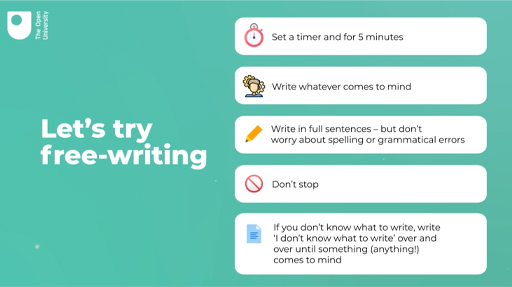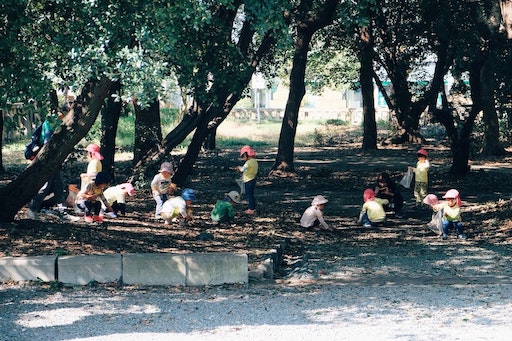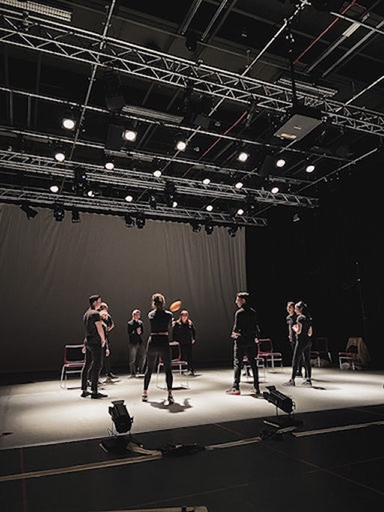1 Telling stories
Appreciative inquiry begins with our stories: the ways in which we tell them and the starting points they give us for generating new ways of seeing. As part of this storytelling, we use metaphors and images to shape how we tell stories about our practice. Metaphors and images are significant in themselves, but they are often accompanied by elaborate national, institutional or peer developed stories. These stories are vitally important as a ‘portal through which … the world is interpreted and made personally meaningful’ (Connelly and Clandinin, 2006, p. 477), but they can also ‘constitute a part of our horizon, a limitation in our way of seeing’ (Georgii-Hemming, 2007, p. 13). In educational settings, these stories can include images and expected actions in our role as practitioners, assumptions about the role of education in a particular phase, stories that maintain reliance on particular systems, or traditions and expectations we constantly reinforce through our actions. These stories, which we are socialised into, and which we contribute to, shape why and how we act in certain ways and cannot be underestimated, but we often don’t consider how ‘different stories’ would impact on our practices.
We also often tell short stories (sometimes as headlines), whereby the details that may actually be the most important aspect are left out. This takes us to the very core of an appreciative approach to inquiry, which aims to make us pay attention to our current stories, immersing ourselves fully in their details, finding elements of our stories that excite, energise and intrigue us, and in doing so opening up possibilities for inquiring and building on these generative aspects of practice. Storytelling therefore creates spaces that allow us to ‘trouble’ (Haraway, 2016) current narratives, images, metaphors and practices, and generate different stories and alternative possibilities that enable people (individuals or organisations) to practice differently. As Haraway (2016) states, ‘… it matters what stories we tell to tell other stories with … It matters what stories make worlds’ because ‘they propose and enact patterns for participants to inhabit’ (pp. 10–12).
As stories (encompassing metaphors and images) are the vehicle of an appreciative approach to inquiry, in this session, we will ask you to undertake a number of writing activities (either individually or collectively if you are inquiring with others). We begin with a series of activities that model the process of using story as a way into appreciative inquiry and then turn to your own practice to identify an area of inquiry that interests you.
Activity 1 Starting with an image
We do not often take the time or find the space to allow ourselves to freely explore the stories we practice within. This free writing activity aims to begin the process of immersing yourself in a process of discovering and surfacing these stories. You will use an image as a stimulus for telling stories that are important to you and relate to areas of interest and potential inquiry in your own practice.
Watch this brief video introduction to the ‘rules’ of free writing [you may want to enlarge the viewing window to full screen]:

Choose one of the images below. Which one immediately draws your attention? What does it say to you about your practice, your inquiry or scholarship, or your institution or organisation?
Now set a five-minute timer and use the image and your initial reflections as a stimulus for a piece of free writing. Remember to write continuously, not solely describing the image, but using it as a starting point to tell a story of your own. At this stage, we are freeing up our thinking so let your writing take you in whatever direction it goes.
Note: You may want to return to this activity a number of times, using stimuli linked more directly to your area of inquiry or in response to new ideas you develop during the process. It also works well as a collective activity, whereby individuals writing from the same stimuli can generate multiple perspectives and ideas to follow.
We tell stories all the time. In educational settings, where we are all very busy, these stories can sometimes be reduced down to headlines, titles or very small snippets during conversations with colleagues or learners. Allowing ourselves the time and space to go beyond these headlines (and five minutes can sometimes feel like a very long time) allows us to immerse ourselves in a broader view of practices. This breadth is critical to appreciative inquiry. We need to not only see the issues or problems, often quickly reported as a headline, but also the possibilities that lie in the small details that offer a way forward or a generative idea to build on. So, as well as telling stories, we also need to think with these stories, to find the things that excite, intrigue and engage us to want to inquire further.
Note: The next set of activities invites you to think with the free writing you have just completed. Later in the session you will complete activities linked to your own inquiry area. Together, these activities provide a suite of options that you can use by yourself or collaboratively to support the immersion phase of the appreciative approach.



